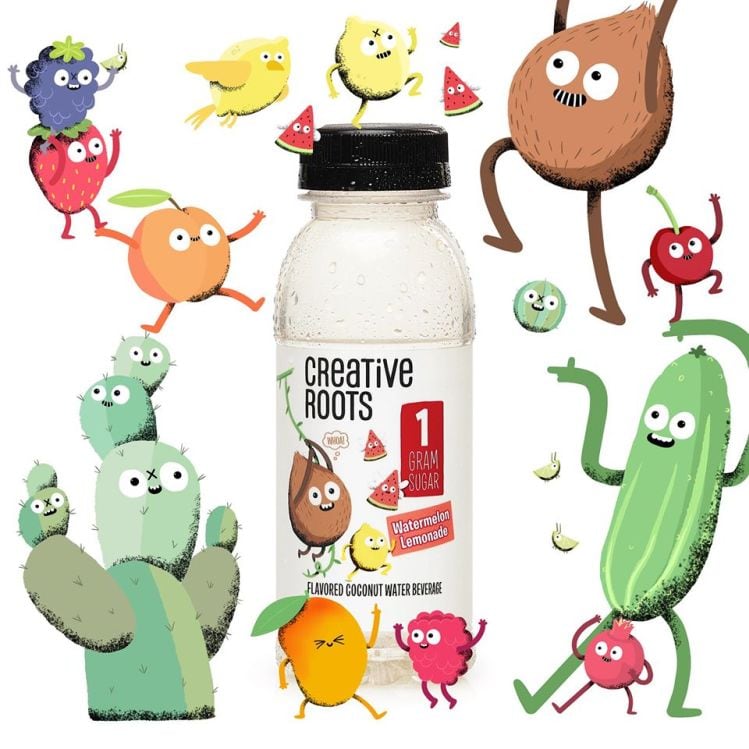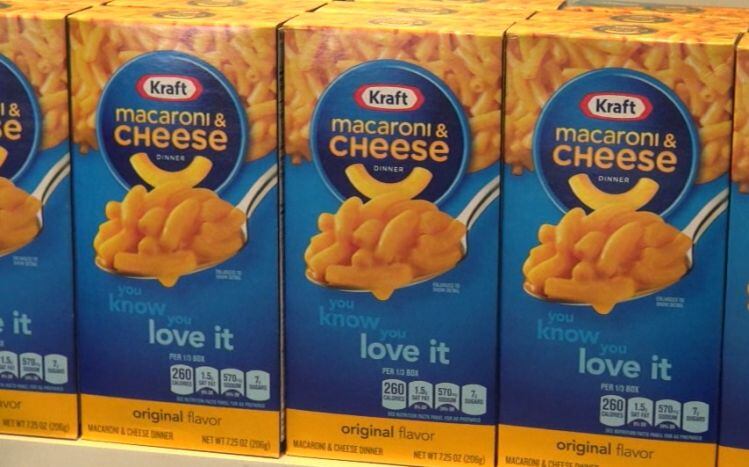Speaking on the firm’s Q2 earnings call after posting a better-than-expected 3.8% rise in net sales versus the year-ago period to $6.6bn, but a significant net loss ($-1.65bn) owing to impairment charges, Abrams-Rivera said: “Across our iconic brands, we are experiencing growing household penetration and increasing the rate of repeat among new buyers.
“This includes big brands that were already well-established and significant leaders in their categories, such as Heinz in ketchup, Kraft Mac & Cheese, Ore-Ida, Planters, Philadelphia and Capri Sun. In terms of repeat rates, new buyers are repeating at higher rates than in the past and buying more frequently. In fact, 75% of new buyers since the pandemic started are still buying our products now.”
He added: “Regarding new buyer demographics, smaller households, including those with no kids, are finding our brands. And our new buyer household skewed to higher income, younger and more diverse parts of the population, where we have historically under indexed.
"All this means we have a tremendous opportunity to build our base of loyal consumers, and we're going after this aggressively with a second half plan that includes a 40% increase in working media dollars versus a year ago.”
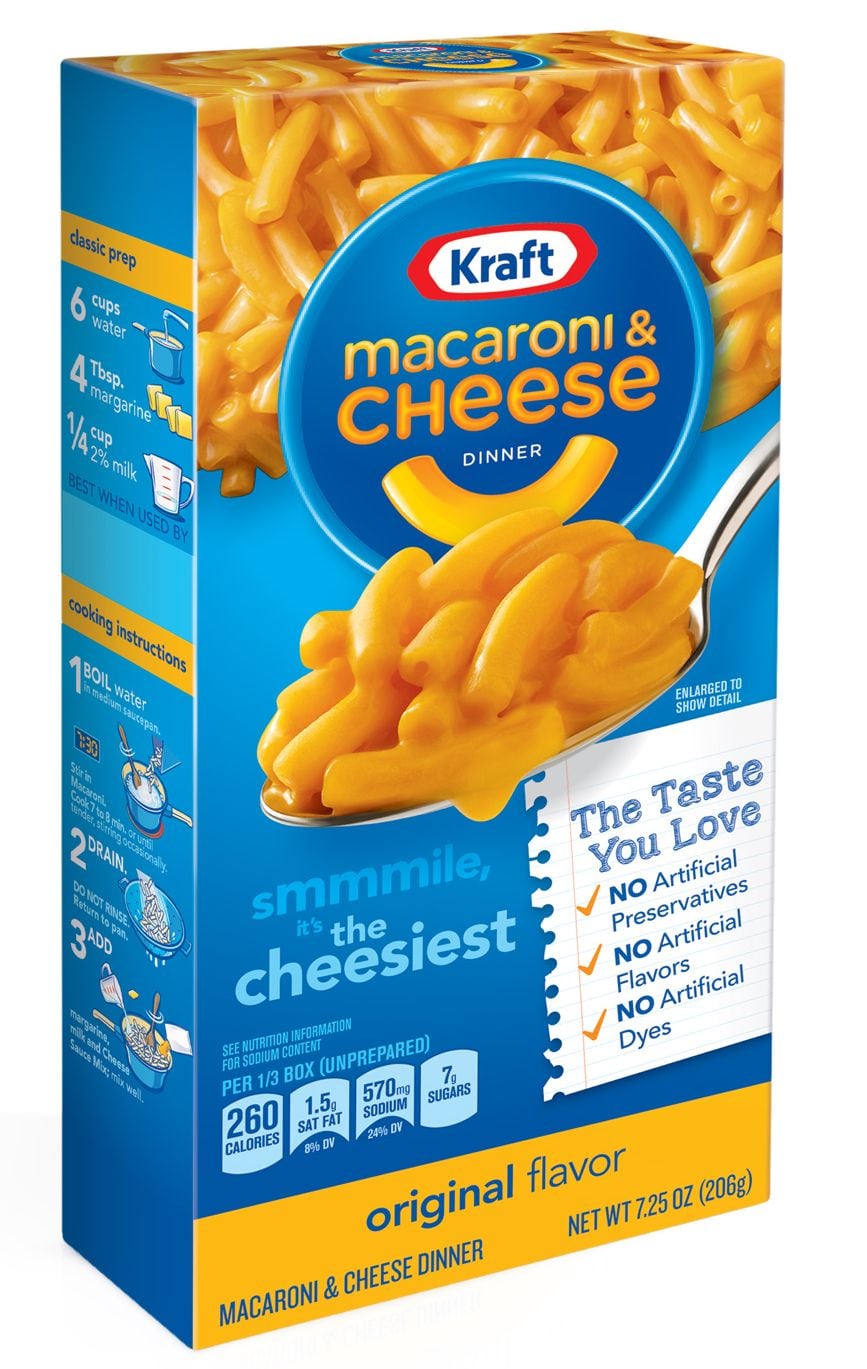
Net sales at Kraft Heinz rose 3.8% to $6.6bn in the second quarter versus the year-ago period, driven by a strong performance in the US market (+8.5% to $4.9bn).
International sales edged down slightly (-0.7%) to $1.3bn, while sales in Canada fell -23.9% to $426m reflecting the sale of its Canadian natural cheese business and currency impacts.
The company posted a net loss of $1.65bn (vs a profit of $449m in Q2, 2019).
‘We have to keep these [new] consumers with us’
The focus for Kraft Heinz now is “learning about who these new consumers are and that is our obsession at the moment, to keep them with us,” said CEO Miguel Patricio, who said bosses would update the market on the company’s long-anticipated strategic plan in September.
“They are new consumers and they are repeating the purchase of our products. We cannot miss this opportunity. It's an unbelievable opportunity. I would say it's almost a sampling opportunity that we are having. And we have to keep these [new] consumers with us.”
‘In certain categories, we know we can do better’
Commenting on the company’s performance in Q2, he said, for some brands, the results could have been even better were it not for supply chain constraints as bosses adjusted operations to accommodate significant increases in demand for retail products and a drop-off in demand for foodservice products.
“In areas like our Oscar Mayer meat and Kraft single businesses, our share has been negatively impacted by sustained elevated consumption versus supply chain constraints, while more vertically integrated players have been able to shift capacity from their foodservice businesses to retail. So while we're growing strongly in those businesses, we are seeing some share loss.”
Elsewhere in the portfolio, Heinz, Jell-O, Ore-Ida are gaining share, even with this accelerated consumption, he said. “In a nutshell, promotional activity and the pace of inventory recovery, both ours and our retail partners, have been dictated by the balance of supply and demand…
“What that means for us is, growth has been good, but in certain categories, we know we can do better.”
‘Fewer, bigger innovations’
Asked about innovation at Kraft Heinz, Abrams-Rivera said: “If you recall, we actually, in 2020, have half the projects that we had a year ago… As we go to 2021… I can tell you that we're going to be focused on fewer, bigger innovations.”
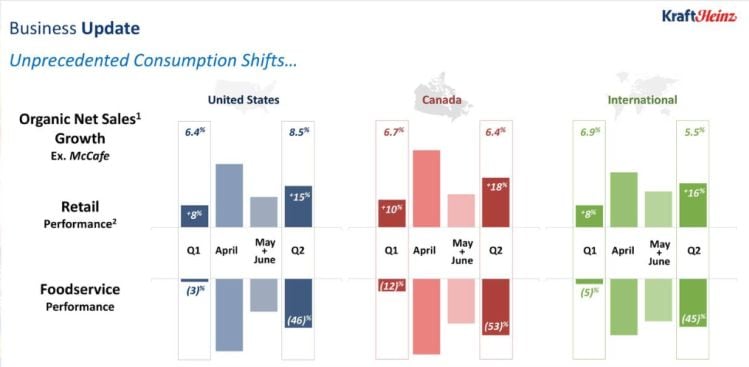
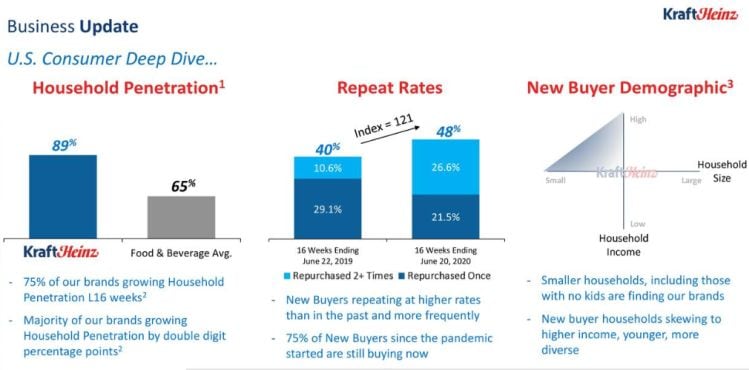
‘We want to be much more consumer-centric’
A better-than-expected quarter notwithstanding, Kraft Heinz – which posted a $1.65bn net loss in Q2 – is “still not where we want to be on several fronts,” conceded Patricio.
“We are making significant changes to how we work, how we are organizing our business, how we are developing our capabilities, and how we are reinvesting in the business
“We are increasing media [spend] in the second half to put more steam behind brands where we saw big household penetration growth. At the same time, we are making a big change in marketing overall... We just hired three new heads of marketing for each one of our geographic zones. We are changing and evolving. We want to be much more consumer-centric.”
“75% of our brands are growing household penetration [in the US], and the majority of our brands growing household penetration are up double-digit percentages points versus the same period last year.”
Carlos Abrams-Rivera, Kraft Heinz
Kraft Heinz will be speaking about Creative Roots - its latest innovation in the kids' beverage space - at our virtual FOOD FOR KIDS summit later this year. Find out more HERE.
